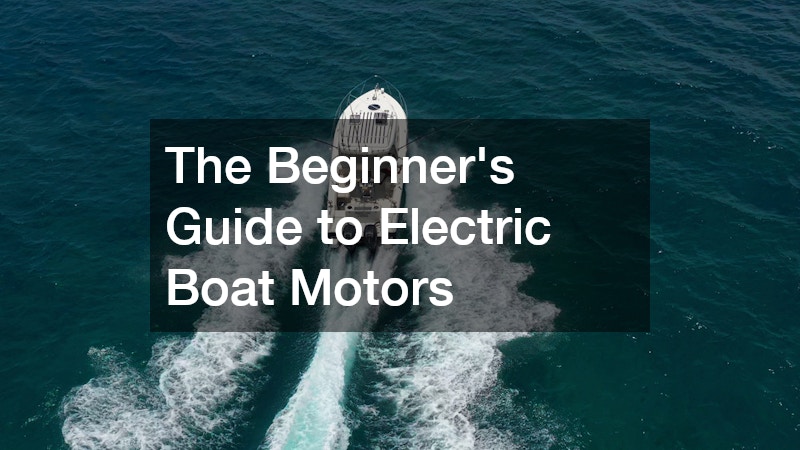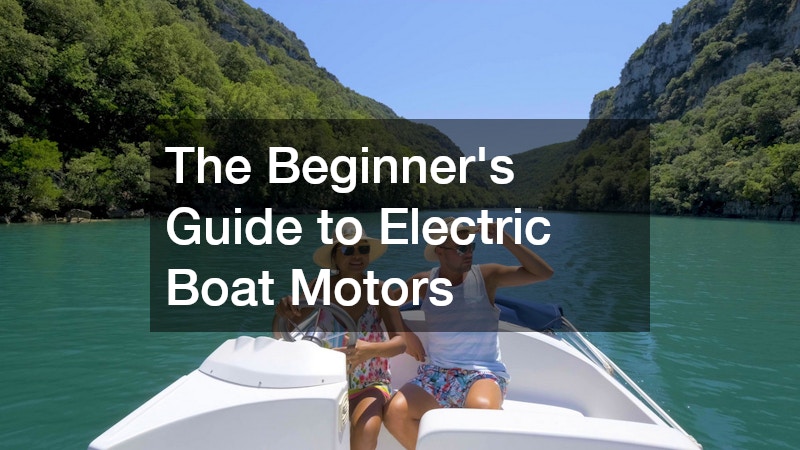The world of boating is undergoing a quiet revolution—literally. Electric motor for boats are rapidly gaining popularity as a sustainable and efficient alternative to traditional gasoline or diesel engines. Whether you’re a seasoned sailor, a fishing enthusiast, or a recreational boater, the shift toward electric propulsion is transforming how we experience the water.
Unlike internal combustion engines, which rely on fossil fuels and generate noise and emissions, electric motors offer smooth, silent, and environmentally friendly operation. This guide will walk you through everything you need to know about electric boat motors—from how they work to how to choose the right one for your vessel.
How Do Electric Boat Motors Work?
At their core, electric boat motors operate on a simple principle: electrical energy is converted into mechanical energy to propel the boat. The system consists of three main components—the motor, the battery, and the control system—each playing a crucial role in the propulsion process.
The motor is the heart of the system, responsible for turning electrical energy into rotational motion. When you engage the throttle, electricity flows from the battery to the motor, generating torque that spins the propeller. Unlike combustion engines that require gear shifts, exhaust systems, and fuel injectors, electric motors provide instant power with fewer moving parts and less mechanical complexity.
The battery acts as the energy source, storing electrical power that can be drawn upon as needed. Modern battery technology allows for significant runtime and efficient energy use. The control system—essentially the motor’s brain—regulates power distribution, monitors temperature, and ensures smooth acceleration.
Together, these components deliver a boating experience that is not only quieter but also cleaner and easier to maintain.
Types of Electric Boat Motors
Electric boat motors come in several configurations, each suited to specific types of boats and performance needs. The three most common are inboard, outboard, and pod motors.
-
Inboard Motors:
These are installed inside the hull, connected to a shaft and propeller. Inboard electric motors are typically used in larger vessels or sailboats that require more power and a balanced center of gravity. They provide excellent efficiency and are well protected from damage. -
Outboard Motors:
Outboard electric motors are mounted externally on the boat’s transom, making them easy to install, remove, and maintain. They are ideal for smaller boats, dinghies, and fishing vessels. Many electric outboards are designed as direct replacements for gas-powered ones, offering a familiar setup with quieter, cleaner operation. -
Pod Motors:
Pod motors integrate the motor and propeller into a single underwater unit, often mounted beneath the hull. This setup maximizes efficiency and maneuverability, making it popular for yachts and high-end electric conversions.
Choosing between these options depends on your boat’s design, how you use it, and your desired balance between power, simplicity, and efficiency.
Battery Types and Their Impact
The type of battery you choose for your electric motor has a major impact on performance, range, and cost. There are three primary types used in marine electric propulsion: lead-acid, AGM (Absorbent Glass Mat), and lithium-ion batteries.
-
Lead-Acid Batteries:
The most affordable and widely available, but also the heaviest. They have a shorter lifespan and require regular maintenance. Best suited for smaller boats or short trips. -
AGM Batteries:
A more advanced form of lead-acid technology, AGM batteries are sealed, maintenance-free, and perform better in deep-cycle applications. However, they still lag behind lithium options in energy density and weight. -
Lithium-Ion Batteries:
The premium choice for electric boating. They are lightweight, charge faster, last longer, and deliver consistent power output. Although more expensive upfront, they offer the best overall performance and long-term value.
Your choice will depend on your budget, range requirements, and how frequently you use your boat.
What Are the Benefits of Using Electric Boat Motors?
Environmental Advantages
One of the biggest drivers behind the electric boating trend is its positive environmental impact. Electric motors produce zero emissions, helping reduce water and air pollution. Unlike gasoline engines, they eliminate the risk of fuel spills and do not release harmful exhaust gases such as carbon monoxide or nitrogen oxides.
Additionally, their quiet operation helps protect aquatic ecosystems by minimizing noise pollution, which can disturb marine life. For eco-conscious boaters, electric motors align perfectly with the growing demand for sustainable recreation.
Cost Efficiency and Maintenance
While the initial investment in an electric boat motor can be higher than a comparable gas model, the long-term cost savings are significant. Electricity is cheaper than gasoline, and maintenance costs are drastically lower because electric motors have fewer moving parts and no need for oil changes, spark plugs, or fuel filters.
Over time, the reduced fuel and maintenance expenses often offset the upfront cost. Moreover, as battery technology continues to improve and become more affordable, the overall cost of ownership is steadily decreasing.
How to Choose the Right Electric Boat Motor
Selecting the right electric motor depends on several key factors, including power requirements, battery capacity, and boat design.
Power and Performance Requirements
Electric boat motors are rated in kilowatts (kW) or pounds of thrust rather than horsepower (HP). As a general rule, one horsepower equals about 746 watts. Matching your motor’s power to your boat’s size and intended use is crucial.
For example, a small dinghy might need only a 1–3 kW motor, while a mid-size pontoon or sailboat might require 10–20 kW for optimal performance. Consider your cruising speed, range expectations, and the type of water conditions you typically encounter.
Installation and Compatibility
Before purchasing, ensure the motor is compatible with your boat’s hull type, transom design, and electrical system. Outboard systems are generally easier to install, while inboard or pod systems may require professional installation.
You’ll also want to check your boat’s weight capacity to accommodate the motor and battery system. Proper placement of batteries is essential for maintaining balance and stability.
Electric boat motors represent the next wave of marine innovation—clean, efficient, and remarkably quiet. They offer boaters a way to enjoy the water without the noise, fumes, and high maintenance associated with traditional engines.
With advancements in battery technology and motor efficiency, electric propulsion is no longer just a niche option; it’s a practical, sustainable choice for a wide range of boaters. By understanding how these systems work and what factors to consider when choosing an electric motor for boats, you can make an informed decision and join the growing community of eco-friendly boaters embracing the future of clean marine travel.





